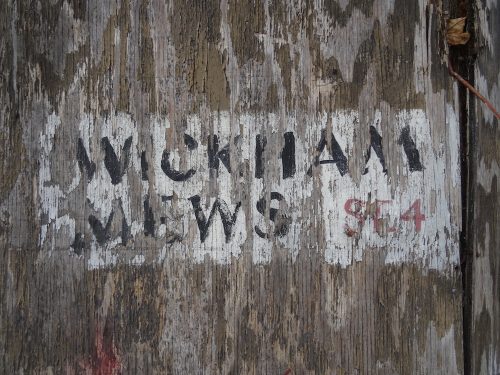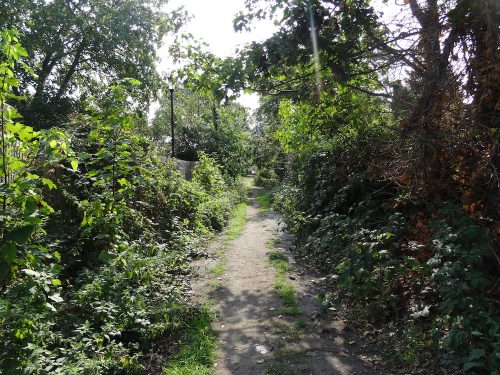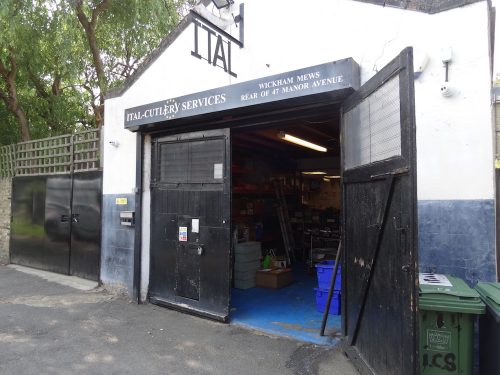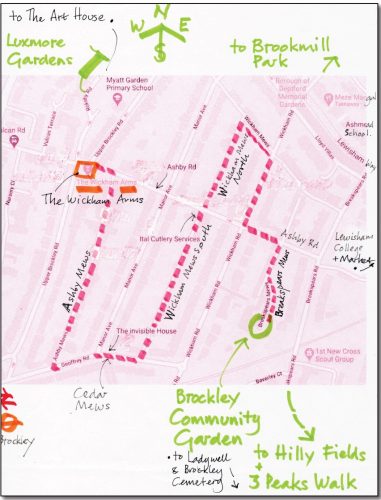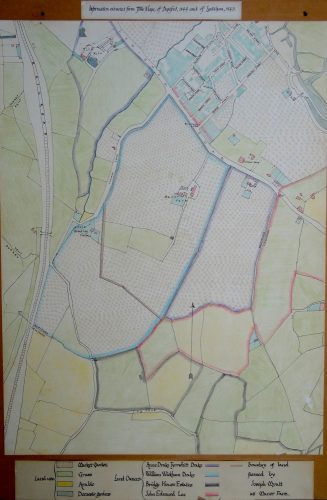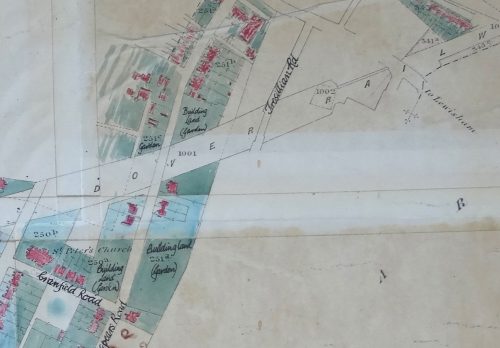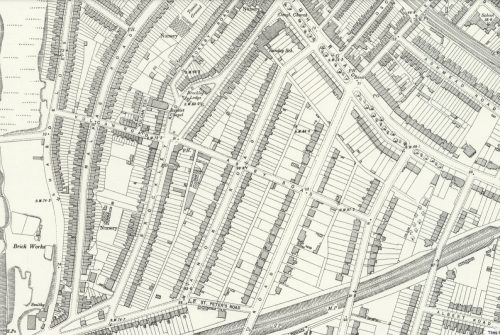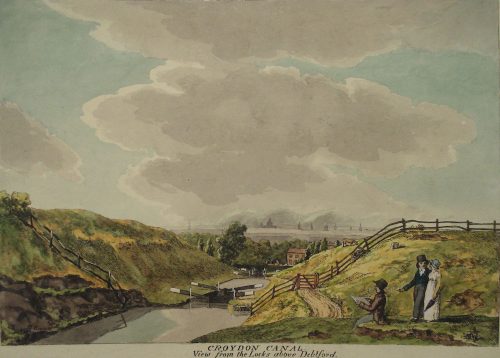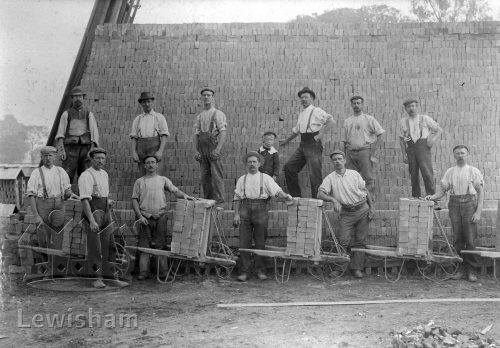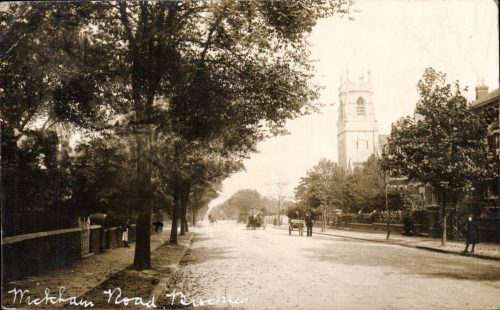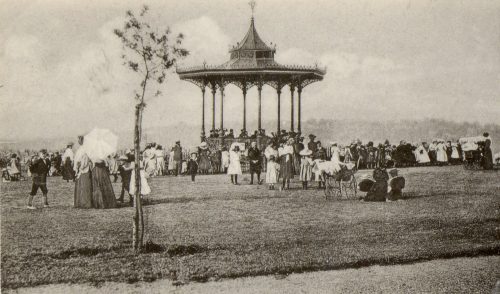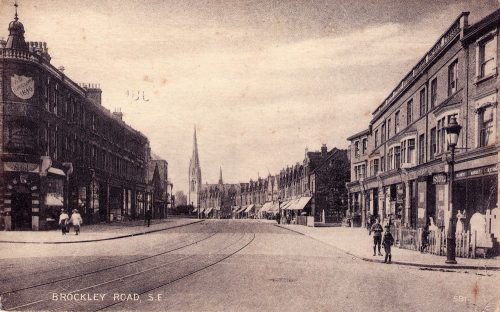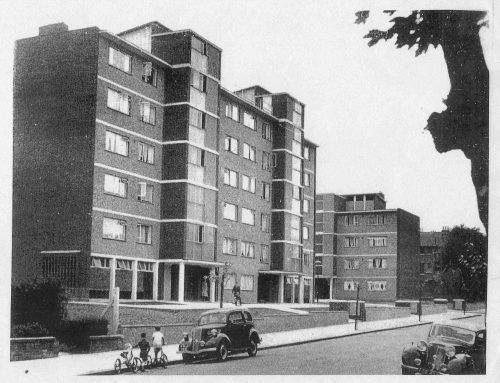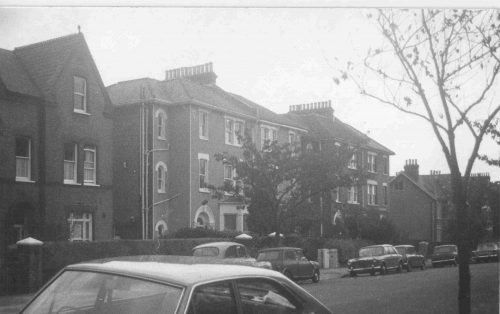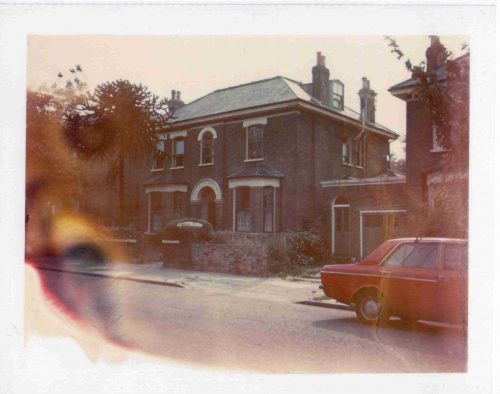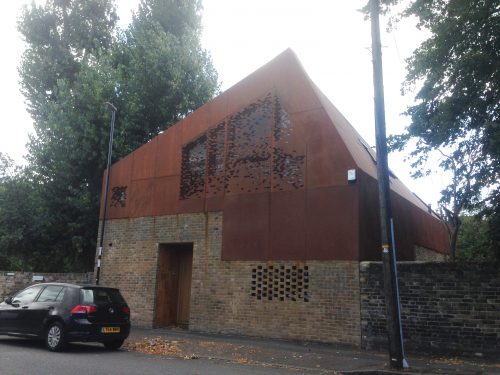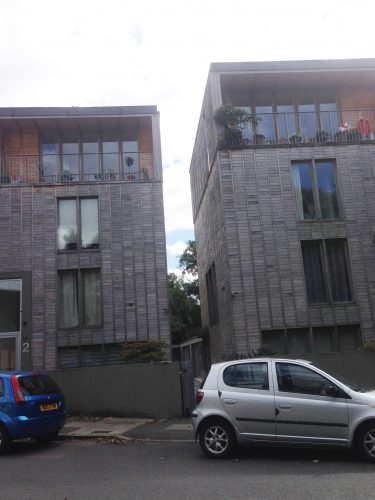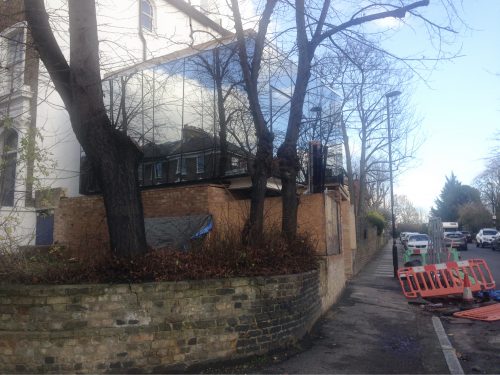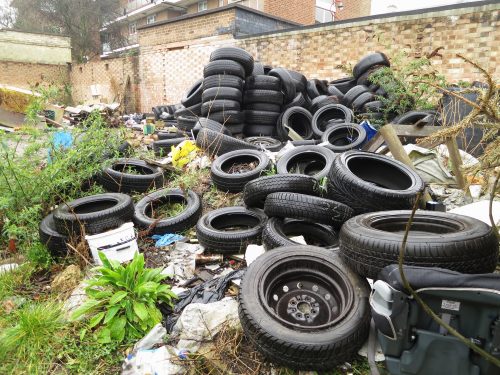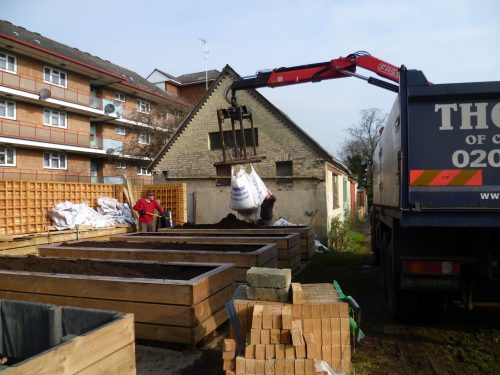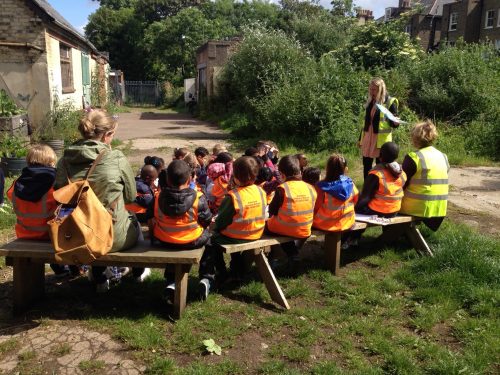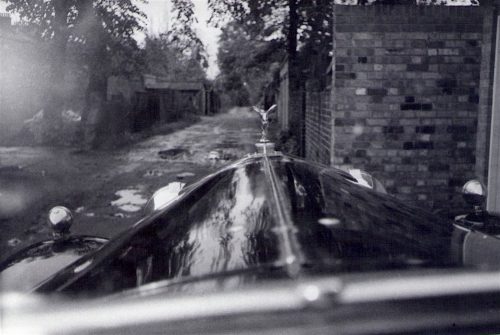Open House London festival is taking place between 14 – 22 September 2024.
Brockley Society are pleased to contribute two events:
1. An Architectural Walk in Brockley
Saturday 21 September 2024
Meet 11am, War Memorial, Lewisham Way, cnr. Upper Brockley Road, SE4 1SX.
Duration 60-75 minutes approx.
Ends Pistachio’s Cafe Hilly Fields, SE13 7JN
(Buses: 484 or 122 or walk to Ladywell, Brockley or Crofton Park Stations)
Brockley Conservation Area’s High Victorian enclave holds many interesting houses in a variety of styles, including Edwardian domestic architecture, historic trees and original lanes and mews. These have survived into the 21st century almost intact. Houses built in the 1950s and 1960s indicate WWII bomb damage and add to the area’s variety and history. But modern buildings of good design quality, in the right places, can enhance the conservation area and add to its architectural interest.
2. Brockley’s Historic Mews walking tours
Sunday 22 September 2024
We will explore Ashby, Wickham and Breakspears Mews
Start times: 11am, 12.30pm and 2pm
Duration approx. 45 mins
Start: meet at the Wickham Arms pub, 69 Upper Brockley Road, SE4 1TF.
Finish: at Breakspears Mews Community Garden (open 12 – 4pm for refreshments).
No booking needed.
Self-guided tours at any time – see details below.
Don’t miss this opportunity to discover Brockley’s quirky Mews and enjoy the tranquility of the community garden in Breakspears Mews. We describe Brockley’s early history: 19th century High Victorian development; careful street layout with mews; the battle to protect mews and gardens from development in the 1970s; and several stunning modern buildings. The tour has been updated to include several recent changes.
Background to the Mews Walk
In the past, the Open House scheme provided access to buildings that are usually off-limits to the public. The COVID pandemic caused a rethink; outdoor spaces of interest were also added to the listings, and this approach has continued. Numerous overlooked and hidden features of our local environment (often right on our doorsteps) have been brought to light. Via both guided and self-guided walking tours, people have discovered fascinating aspects of London’s built environment for the first time. Brockley Society is pleased to contribute two walks around the areas’s unique historical mews.
Built as part of the extensive Tyrwhitt-Drake and Wickham families’ estates, Brockley Conservation Area’s quirky mews are now a mixture of leafy lanes and industrial units intertwined harmoniously with Victorian and radical modern architecture. We will explore these public rights of way which not only provide a unique perspective on our local community but also support extensive wildlife.
A self-guided walk can be done at any time using the following resources:
Main booklet: A walk through Brockley’s Historic Mews with map (8 page PDF)
Mews map (see right) and walk summary (2 page PDF)
Mews map and Picture Quiz (ideal for children) (2 page PDF)
LB Lewisham Planning and Architectural supplement (Brockley) (5 page PDF)
On Saturday 21 September between 10:00 and 18:00 you could also enjoy a Drop-in: Guided Tour at Lewisham Arthouse (Lewisham Way, SE14 6PD), a not-for-profit artist-led co-operative, based in the formerly Deptford Central Library, Grade II listed, 1910 -1914, Designed by A. Brumwell Thomas (1868 -1948).
Other self-guided walking tours of local green spaces:
Luxmore Gardens Self-guided walk. A hidden gem between Malpas Road, SE4 1BS and Rokeby Road, SE4 1DE. www.goparks.london/park/luxmore-gardens/
Brookmill Park Self-guided walk starting at Elverson Road DLR Station, SE8 4LA (but can be done in any order). See their website here.
Brockley 3 Peaks Walk: 5 miles over Blythe Hill, Hilly Fields and One Tree Hill. Follow a free online self-guided walk, or buy a printed map at Pistachio’s Hilly Fields Cafe, SE13 7JN or Crofton Books in Brockley (315 Brockley Rd, London SE4 2QZ)
Ladywell and Brockley Cemeteries Guided walks run by the Friends of Brockley and Ladywell Cemeteries. Check their website here.
Background information about Brockley and the Mews
Brockley’s Early History
Brockley derives its name from ‘Broca’ an Old English word meaning ‘wood clearing’ or ‘stream’ (i.e. ‘brook’) and ‘Ley’ meaning ‘wood’. Brockley is recorded as a Saxon settlement in 952 and is mentioned as a small hamlet in the Domesday Book.
Brockley Green is the site of the hamlet on an old lane from Deptford to Sydenham, which became known as Brockley Lane and coincides now with Tanners’ Hill, Upper Brockley Road and Brockley Road.
In 1189, at the end of Henry II’s reign, the Manor of Brockley was created when it split from the Manor of Sayes Court and the founding of a Premonstratensian Abbey was granted near the present St Peter’s Church and the former Manor Farm at the southern end of what is now Breakspears Mews. The abbey was requisitioned by Henry VIII in 1527.
Brockley Green agricultural settlement was fringed by the Great North Wood which stretched from Deptford to Streatham and Selhurst. The area’s ‘managed landscape of woodland’ provided timber, charcoal, firewood, and oak bark. ‘Night soil’ imported from London fertilised Brockley’s burgeoning and salubrious rhubarb industry!
Until the early 19th century Brockley remained agricultural with farms, nurseries, orchards and market gardens serving London until the 1797 Inclosure Act.
- 1844 land plan
- 1877 land plan
- Ordnance Survey c1905
Canals and Railways Bring Development
Industrial development arrived with the creation of the Croydon Canal in 1809, replaced on closure by the London and Croydon Railway in 1836. This opened up access to local brickfields and gravel pits and encouraged estate owners to develop landholdings as residential areas.
- View from Brockley of Locks on the Croydon Canal, looking NW towards central London (St Pauls just visible)
- JW Heath & Sons Brockley Green Farm Brickmakers At Work c.1890. Photo courtesy Lewisham Archives.
Estates in Brockley were owned by the Wickham and Tyrwhitt-Drake families who ultimately became unified by inheritance and marriage, allowing a coordinated approach to development: Upper Brockley (the land south of today’s Lewisham Way) was laid out by 1851 with wide streets and large Italianate villas backed by free access mews service lanes for use by servants as well as horses and carriages.
The mews were intended for use as a ‘Back Road by the Tenants in Common’ together with the ‘free use and enjoyment … in common with all other parties’.
It is believed that Edward VII, when Prince of Wales, used Wickham Mews for discreet visits to actress Lillie Langtry at No 42 Wickham Road!
- Wickham Rd c1900
- Bandstand in Hilly Fields c1910
- Brockley Rd c1900
Street Layout in the 19th Century
The unique environment we appreciate today was created by the 1870s with foresight and care in layouts responding to the alignment of former country lanes, such as Brockley Lane, respecting field patterns, footpaths and streams.
The main mews are Ashby, Wickham, Manor and Breakspears. Smaller ones are Garsington, Harefield, Cranfield, Wickham Gardens Path, with other less-known paths, greenways and closes dotted around the area.
From their creation the mews were open and ungated. Around 1980 low ‘gallows’ gates were installed at the entrances to discourage unwanted vehicles. These were locked at night but pedestrian access remained open day and night. Each of Brockley’s mews retains its own special character and residents relish the untrammelled free access to a long-established right of way.
Brockley’s Architecture
Brockley’s unusually well preserved enclave of architectural and environmental history has survived into the 21st century almost intact, uniquely rich in High Victorian and Edwardian domestic architecture, historic trees and original lanes and mews. Where 1950s and 1960s houses exist they indicate WWII bomb damage. We have more stretches of Victorian kerbstone than anywhere else in London.
As the large houses fell into disrepair after the war they faced threats including piecemeal attack by property speculators hoping to make a quick profit during the property boom. Lewisham council’s plans to upgrade facilities to modern standards in the 1970s Manor Avenue General Improvement Area and the Housing Action Area included proposals to purchase part of rear gardens backing on to the mews to build housing. These, and proposals to demolish St Peter’s and Brockley Baptist Churches, along with the GLC’s plans for a four-lane highway between Lewisham Way and the railway were fiercely resisted by community action.
The 1967 Civic Amenities Act led to the designation of Brockley Conservation Area in 1973. The local community campaigners formed Brockley Society around the same time.
Brockley has remained uniquely well mixed, with different income groups, different ethnic groups, a balance of old and young people, light industry in the mews, a variety of shops and pubs – all adding a quality that Brockley Society felt was worth preserving.
Building in Brockley’s Mews
The 2005 Brockley Conservation Area Character Appraisal described the mews as unmade service roads behind houses, offering a calm and leafy contrast to the surrounding built-up streets and contributing to the suburban and spacious feel of the conservation area.
Historic maps showed that development in the mews, such as coach housing and stabling, was never widespread as people were more likely to use the new train network. Shortly after, the motor car became available. Because few such buildings were present, those remaining today are rarities of significant historic value, making a positive contribution to the overall character of the area and therefore meriting preservation. Some of the early outbuildings that still exist in Breakspears and Wickham Mews are fairly derelict, but good examples exist in Manor and Ashby Mews.
Mews buildings later became garages, workshops and storage or provided rear access to houses. Setts (stones used to pave roads – similar to cobble stones) were a feature of the mews at least in part, though these deteriorated or were ripped up.
Many modern garages were built at the ends of gardens, but these are small, single-storey buildings with flat roofs which still allow views across the long rear gardens to rear elevations of the Victorian housing and the abundance of mature trees which contribute to the character of the conservation area.
Inadequate storm water drainage and lack of electrical and sewage connections made the mews unsuitable for residential buildings, which were resisted in favour of light industry and storage. Developers nonetheless pushed energetically to build houses and some unsuitable developments were given piecemeal permission. Modern houses at a junction between a mews and a street impact the street pattern and surrounding historic built form. They block views and have a negative effect, not conforming to the conservation area’s character and style. To help prevent negative development a mews Design Guide was created in 1987.
Modern Buildings in the Mews
In 2006 the Brockley Supplementary Planning Document further protected the mews by pointing to constraints that made development undesirable, such as no lighting or road surfacing, unsuitability for modern refuse vehicles which would in any case alter the calm leafy and open character of the mews. The document states a presumption against residential mews development to preserve the appearance of the mews with their trees, views across gardens to rear elevations and the tranquil character of the conservation area. But small-scale single-storey garden buildings, ancillary to the use of the main building, or single-storey garaging have been built.
Since 2000 the concept of live/work, a different planning class to residential, has developed and has been embraced in the GLA’s London Plan. Three live/work units were given permission in Harefield Mews in 2001 and more recently several have been permitted in Ashby Mews, with S.106 agreements fixing the live/work status in perpetuity.
As a result some striking modern architecture has been constructed in Ashby Mews: parts of a large and dreary industrial building have been converted into eye-catching live/work units. A coach house has been preserved with a modern addition. Other smaller modern developments have been built further down the mews alongside older workshops and a house which was given planning permission for puzzling reasons.
- ‘Rusty’ house, Breakspears Mews
- Cedar Mews
- ‘Invisible’ house
A striking modern house exists at the entrance to Breakspears Mews. Because it faces on to Ashby Road, planners considered it did not qualify as a mews residential development. Its solitary position enables its modern design to contribute to the conservation area and enhance its rather regrettable surroundings.
Ashby Mews has the greatest proportion of businesses and industrial units, but there are some in Breakspears, Wickham and Manor Mews, several long-term. Ital-Cutlery Services in Wickham Mews has been there for many decades.
Brockley’s Mews Now
Some issues have recurred in the mews time and again over the last 47 years: irresponsible or unlicensed businesses taking advantage of light oversight, creating noise, pollution or litter, and endemic fly-tipping. Brockley Society’s newsletters record nearly half a century of continual battles to clear rubbish from the mews and stop anti-social businesses.
Breakspears Mews used to be the most problematic. A serious gas explosion, long-term anti-social and unlicensed businesses, spray painting, night-time working and weekend noise led to local residents approaching Brockley Society for a community campaign to reclaim the mews.
Working with Lewisham Council’s officers and councillors, the police, responsible tenants, and volunteers, the mews were cleared of 450 dumped tyres, nine dumped vehicles and mountains of rubbish. Breakspears Mews Community Garden was created. Now raised vegetable beds exist in a strip of the mews where once there was only rubbish and desolation.
- Before…
- During
- School visit
Brockley’s mews are part of ‘Greater Brockley’, which was featured in the shortlist of ten for the 2019 Ramblers’ Association Annual Award for the Best Walking Neighbourhood, citing Brockley’s innovative conservation projects, well-integrated walking network, variety of green spaces and community-friendly feel.
During the coronavirus lockdown the mews have been appreciated by many, but particularly by families with children who have walked, learned to cycle, discovered butterflies and wildflowers, looked at buildings, trees and greenery.
Our mews are quirky, eclectic and all different. They have rough paths, overgrown wilderness, scruffy areas and, regrettably, rubbish and fly-tipping, but also careful planting, street art, large trees in the adjacent gardens, a mixture of buildings. They provide a contrast to the formality of the fronts of houses and streets. Our mews are recorded in literature and more recent reminiscences for over 150 years – a preferred short cut, an errand to a business, or a place to enjoy nature. Long may it so continue.
Further background
Innovation & Conservation one-day case-study conference
A free event held on Saturday 10 June 2017 at Prendergast Hilly Fields College, London SE4.
Brockley Conservation Area was designated in 1974, under the ‘Civic Amenities Act 1967’ which first made provision for such areas. The Brockley Society (which was inaugurated in the same year) proudly celebrated the Act’s 50th anniversary with this one-day conference.
This event was aimed at local residents and sought to increase awareness and understanding of how to protect and enhance our neighbourhoods through good urban design. This is achieved by both protecting what we already have and, where opportunities arise, creating innovative new solutions and designs.
Visit our webpages about the event, with audio recordings and architectural presentations.
For over 40 years the Brockley Society has lobbied and advocated for sympathetic development within both this Conservation Area and the surrounding neighbourhoods. It has striven, sometimes successfully and sometimes not, to preserve the unique characteristics of our special corner of South London; you can find out more about this work on the ‘Advantages and Responsibilities‘ pages of this website.
Our Planning Committee liaises with Lewisham Council, and welcomes the feedback and involvement of local residents and businesses in helping us amicably achieve these aims.
Brockley Conservation Area ‘Character Appraisal’
In 2005, Lewisham Council produced a ‘Character Appraisal’ of the Brockley Conservation Area. This thorough and well-produced document assesses both the history and built environment of the area, and provides a clear rationale for making efforts to preserve the character of the area.
- View ‘Brockley Character Appraisal’ Part 1
- View ‘Brockley Character Appraisal’ Part 2
- View ‘Brockley Character Appraisal’ Part 3
(also available on the London Borough of Lewisham website).
In 2007 a ‘Supplementary Planning Document’ was also published, which summarised the requirements of any structural property redevelopment within the area.
These documents have been invaluable in guiding Brockley Society’s Planning Committee in its decision-making.
‘The Spy of Ashby Mews’
The rich social history of the area is documented in the wartime childhood reminiscences of ex-resident Bob Terry (now living in Canada). Read about Bessie’s Stores, Clarke’s Butchers on Upper Brockley Road, and a host of other local folk from days gone… including a Spy on Ashby Mews! See story on page 4 of our latest newsletter here.
Might the spy, in fact, have taken this enigmatic photo from the Brockley Society photo collection?
Somebody waiting… in one of the Mews… in a Rolls Royce car.
????

